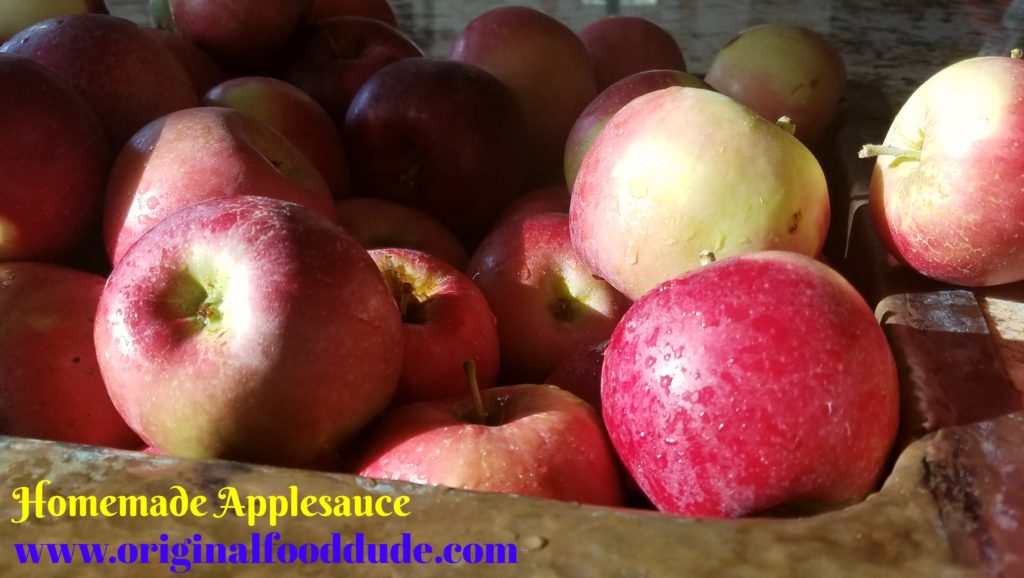
Amazing homemade applesauce oh my…
Background
Growing up in Florida definitely had its perks. We had 300 days of swimming weather, all the citrus I could eat in the winter, beaches, etc. The one thing we didn’t have was really great produce (besides citrus and tomatoes). Try buying a really good apple and you would be out of luck. I even thought I hated cherries because all I had ever had was those little maraschino cherries. I mean… who hates cherries? What was wrong with me?
Then in 2005, I moved out to Utah (from south Texas) for school, and I began to discover the wonderful world of stone and pom fruits. The first time I bit into an Early Elberta peach and all the juice ran down my face and the sweet peachy flavor triggered all my taste buds, I think I even saw new colors. Then the next spring a guy offered me some bing cherries, I turned them down stating “I don’t like cherries” (see above). He forced me to eat one, then immediately regretted his decision as I ate half the bag (I’m a good friend like that).
My Wife Teaches Me…
Then when I got married my wife started talking about Jonathan Apples. Remember an apple to me was an unripened Granny Smith that dries your mouth out or a mushy Red Delicious that is pretty much inedible. There was a whole world of apple varieties I had never even heard off. Jonathans, Jonagolds, Calville Blanc, Pineapple, Cox Orange Pippin, the list goes on. I thought there were only a handful of varieties, like the one we saw in the stores in the south.
Lexie (my wife) and I decided to can applesauce one of the first years we were married. Her mom had done it when she was a girl, and she raved over it. We went to our favorite fruit stand and bought a bushel of Jonathan apples, which Lexie said are the best (I tend to agree). We went home where we boiled and sauced and canned all of them. It made about 14 quarts, that didn’t last near as long as we thought. We did it again the next year with a bit more and have done it periodically since in the fall of the year.
Apples
Now I am by no means an expert when it comes to apple varieties, I generally rely on my friend at Fonnesbecks Greenhouse, Barry has introduced me to more apple varieties than anyone I know. He has a tree there that produces a cotton candy apple, not my favorite but still pretty neat.
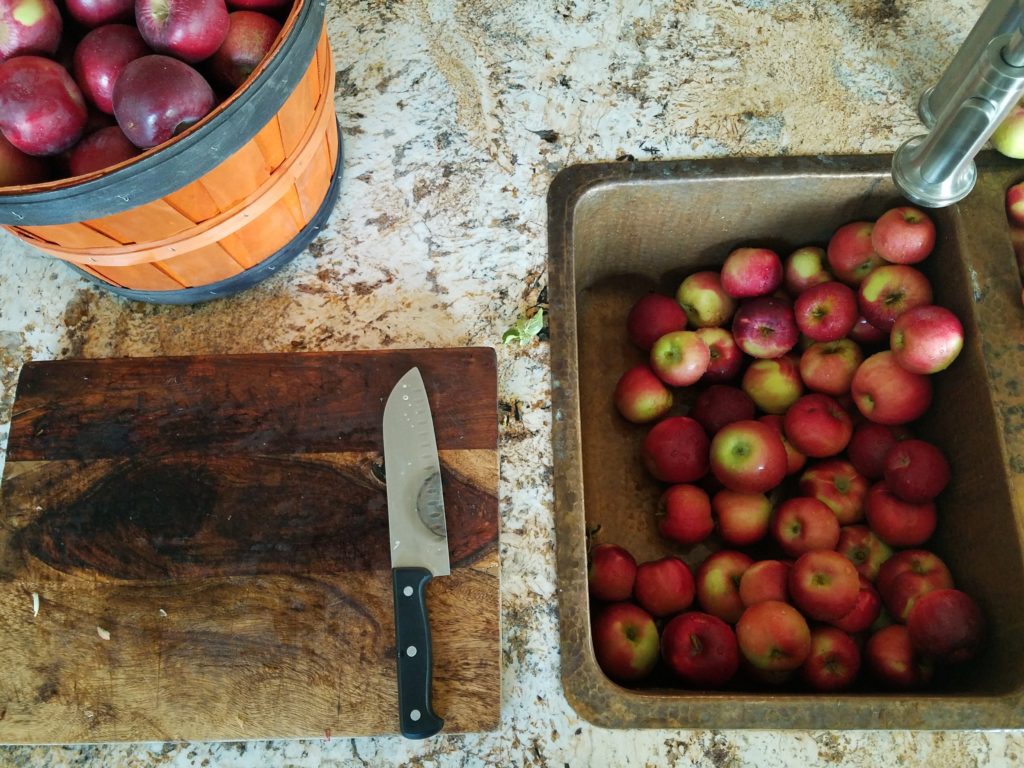
We use Jonathans almost exclusively right now for two reasons: first, they are my wife’s childhood apple. They bring so many memories back to her and we all know how powerful food is to create memories. The second reason and even more important is that I can find them in mass quantities in the fall. Simple as that, I have to use what I can get right now. Fortunately for me, they are delicious with just the right amount of tart to sweet to make almost any apple dish amazing.
Side note, when my Cox Orange Pippin, Calville Blanc, and Honeycrisp trees are mature I’m sure I’ll use those too, along with my Jonathan trees.
Then this year a miracle happened. Our wonderful neighbors across the street told us to come pick their very old Jonathan apple tree clean because it was just going to go to waste. They couldn’t eat them all and they don’t really can food, so we hit the jackpot. My wife went over and picked around 2 bushels one day. Then she went back and picked another 4 bushels. She then sent me over to climb the tree to pick the rest, I got another 2 bushels from the top branches. All in all we picked 2 or so bushels of apples off that tree. That is about 420lbs of apples, we were in hog heaven.
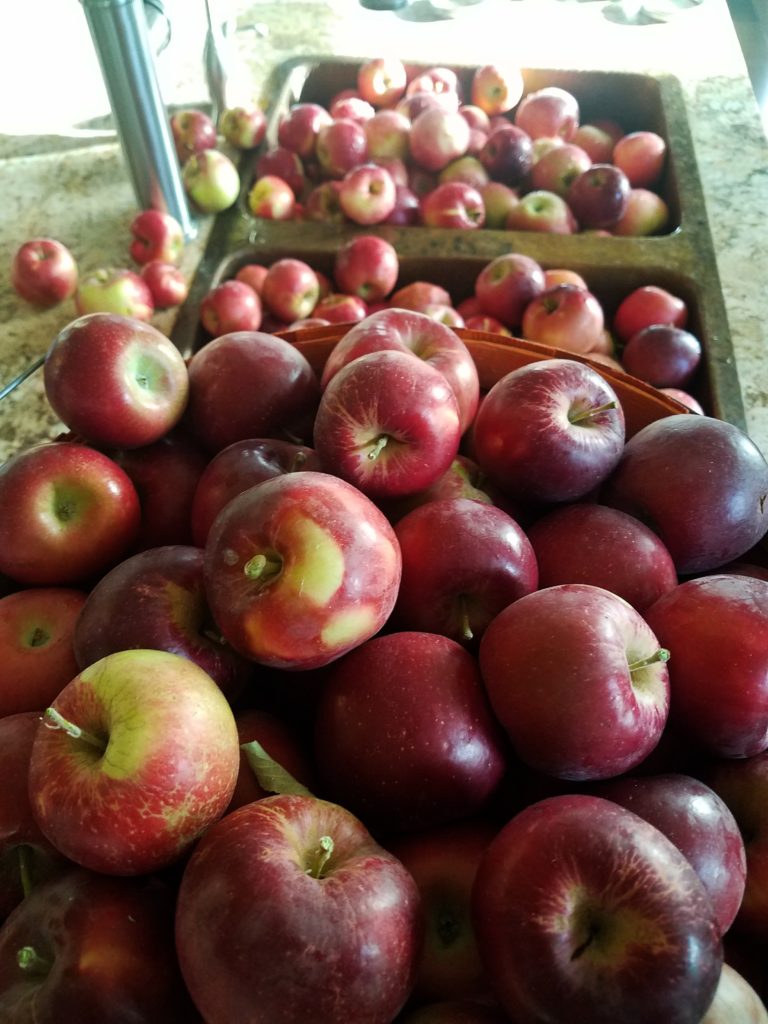
This is like 1/8th of the apples we picked… ahhh what was I thinking.
So what do you do with 8 bushels of delicious Jonathan apples? Well you can eat them (although if you ate 8 bushels you might explode). We settled on four things, all of which I’ll put on the blog in the coming week. First we made applesauce, then we made apple pie filling, we dehydrated a bunch, and finally, I made apple vinegar (that stuff is amazing).
Applesauce
So how do we make this amazing applesauce?
First, we get a bunch of apples.
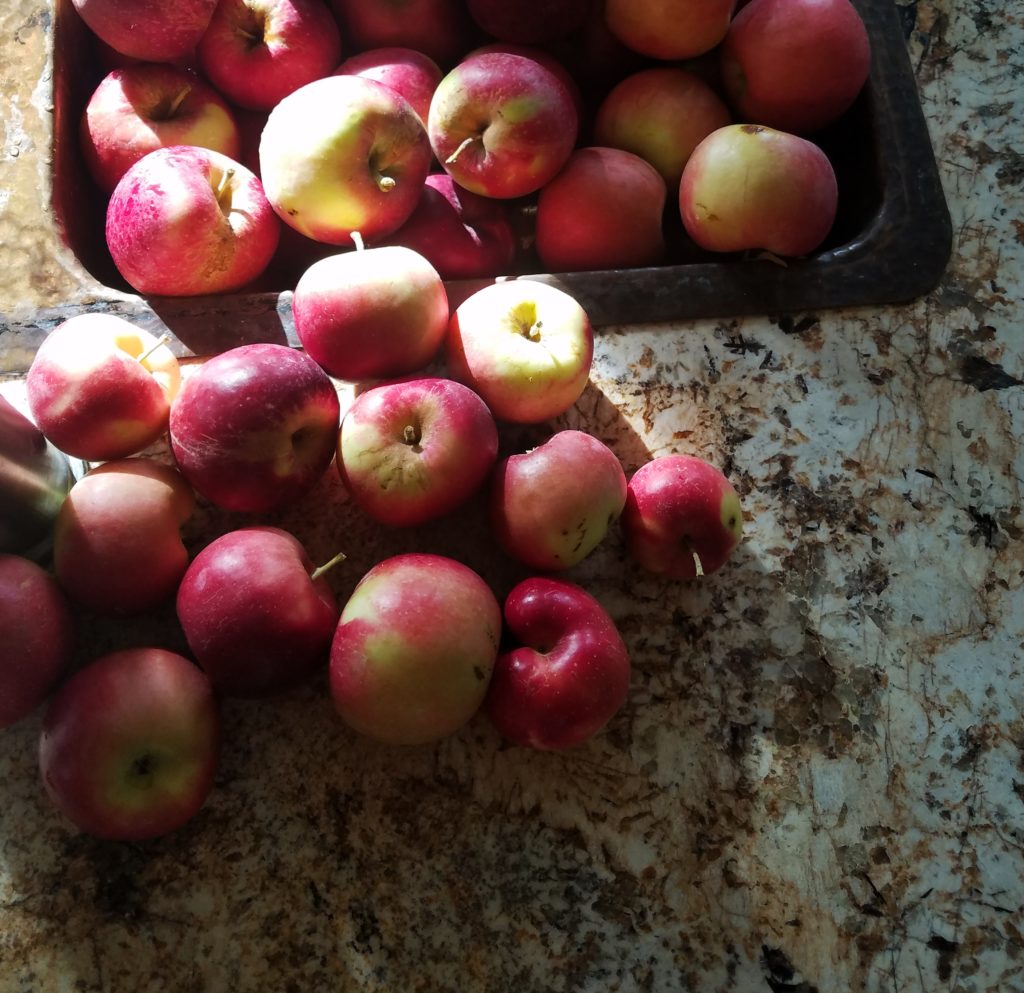
Check.
Then you want to cut them in half or quarters, at least the bigger ones.
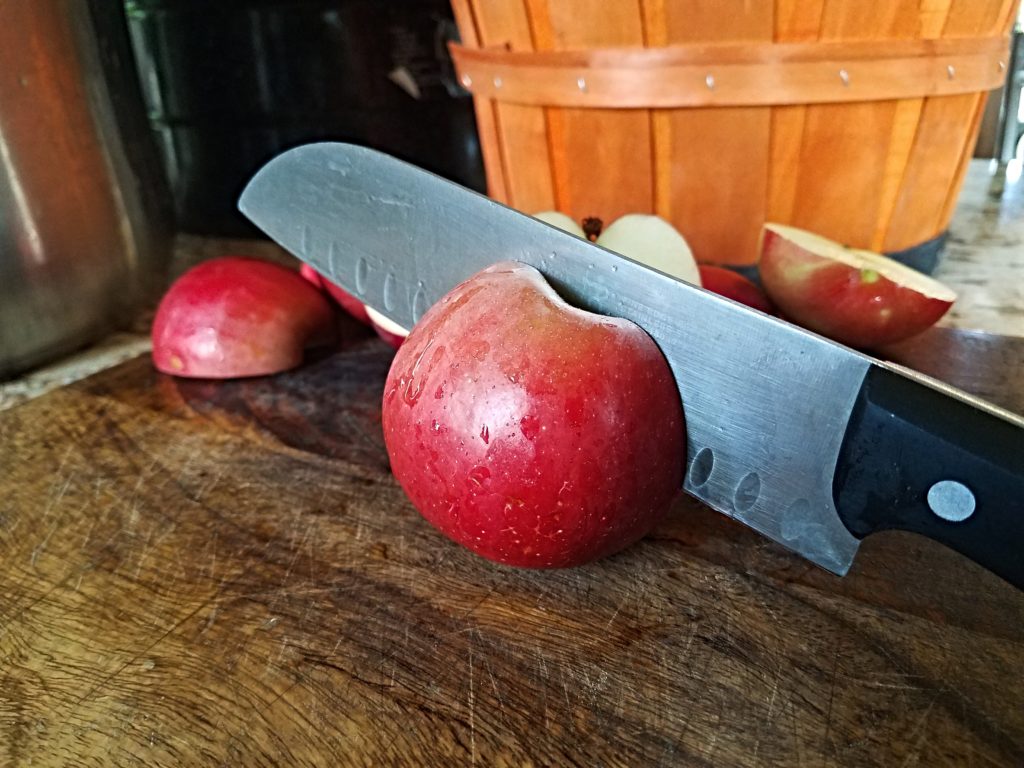
Put all of your apple slices in the biggest darn pot you have, I use a 36 qt stock pot which yields about 11 quarts of applesauce. Be sure and fill about halfway up with water first.
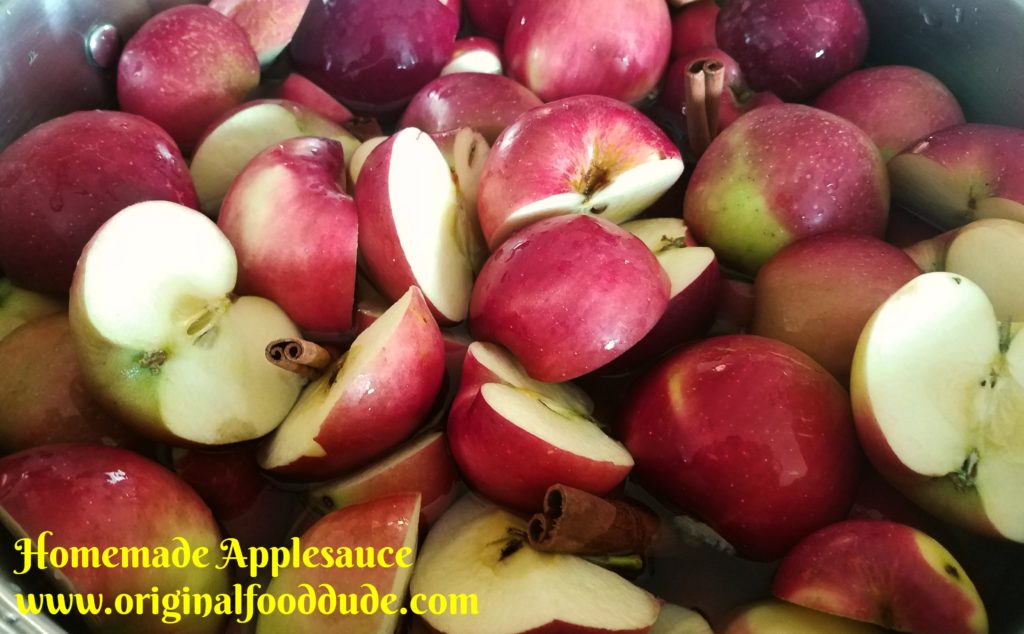
Be sure and add a pile of cinnamon sticks. Nutmeg, cardamon, star anise are also great.
Boil the apples. Be sure and breath deeply as they boil the smell is awesome.
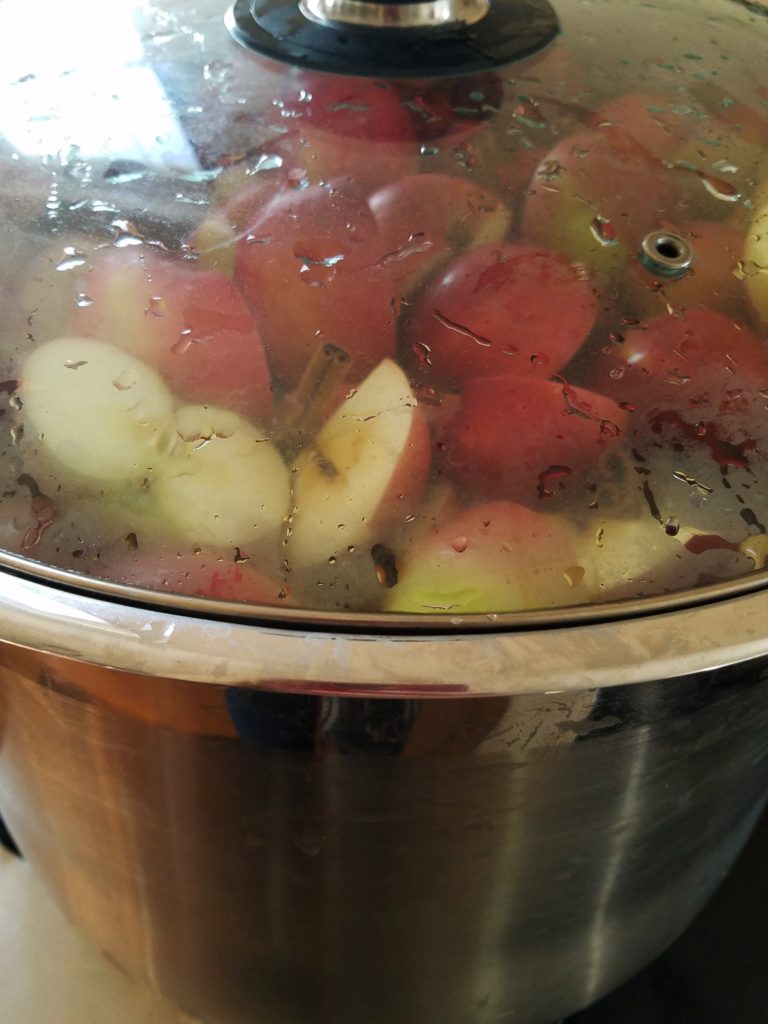
Keep boiling until the skins start to separate from the flesh of the apples.
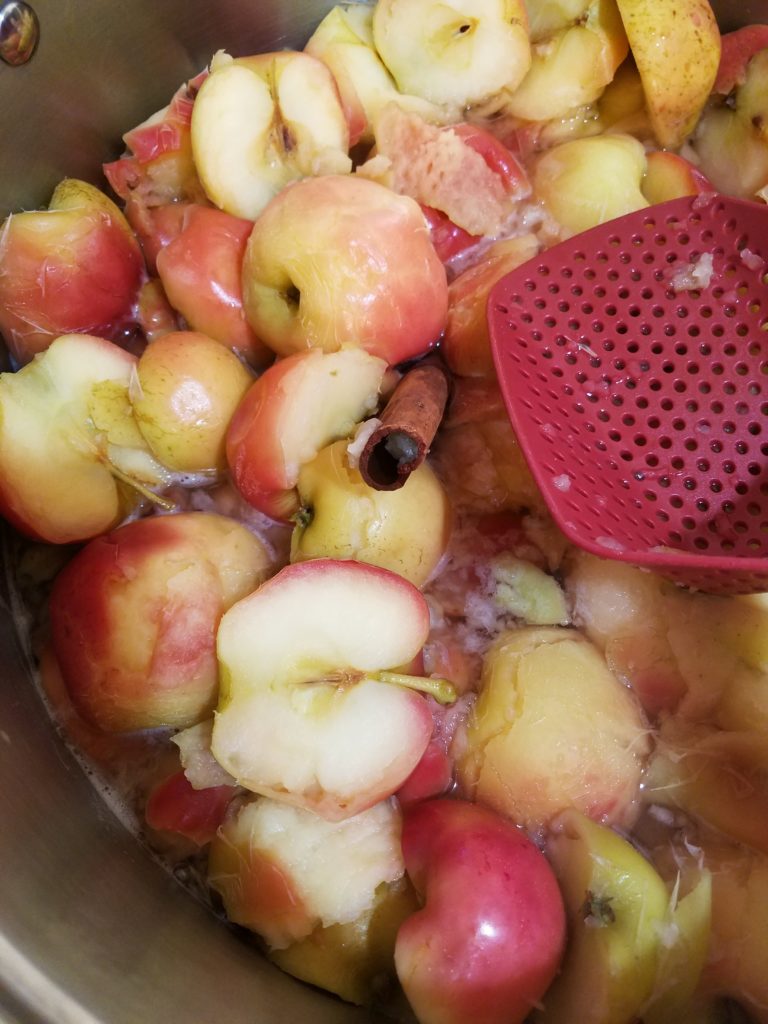
Now time to play some Seinfeld sausage music.
Its pretty much the same process as Kramer and Newmans sausage making.
Now the easiest way to sauce the apples is with a Victorio Food Strainer, but any food strainer will work. I even think Kitchen Aid has one that attaches to the stand mixer.
Here is my set up.
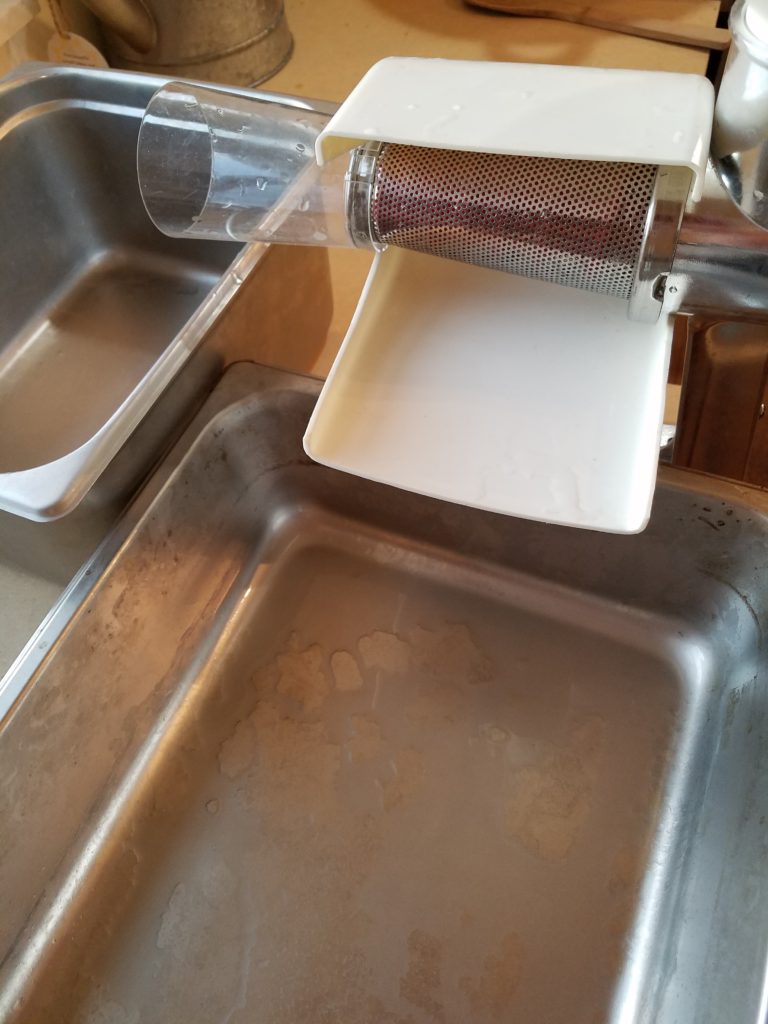
I use a full pan for the sauce and a half pan for the pulp.
Once you are set up and apples boiled simply scoop up apples and put them through the strainer. You spin the handle (great job for an energetic child, that’s what my 4-year-old does). Out will come delicious and beautiful applesauce.
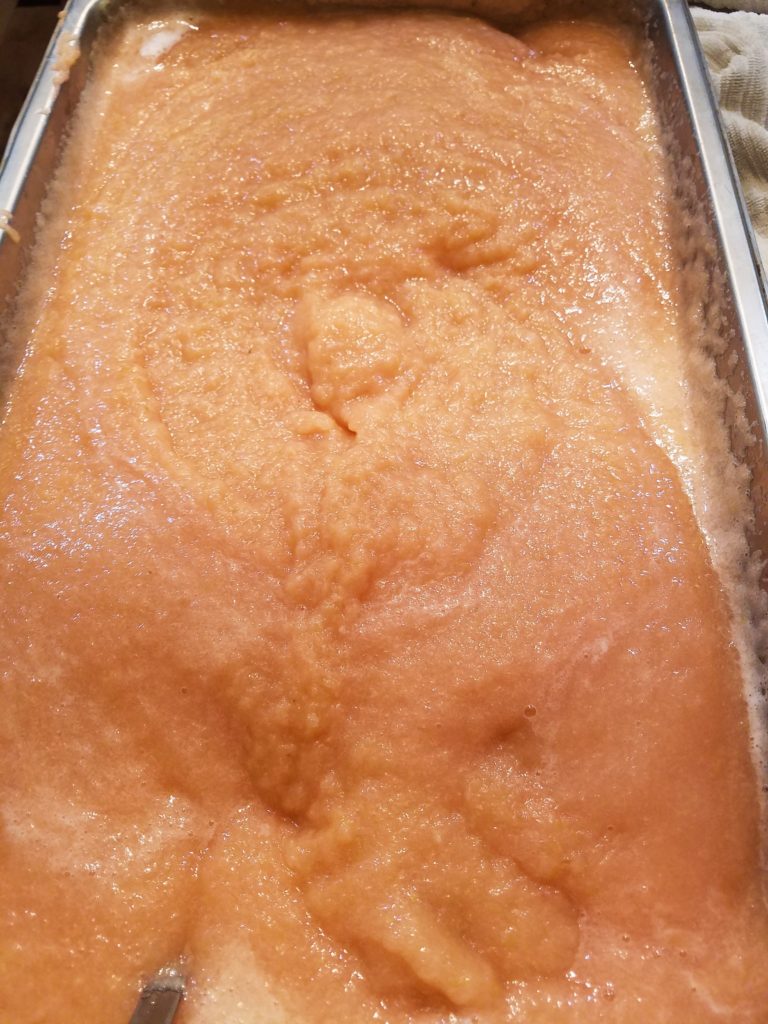
If you notice the pink color of the applesauce, its because I cook the apples with the skin on. This provides the full apple flavor and the beautiful color in the applesauce. Be sure and sauce the apples when they are still hot it is easier and they can way better.
Now you have a full pan of applesauce and are ready to can it.
I generally get the jars and canning stuff ready while I’m saucing the apples. That is where a helper comes in quite handy.
Canning Safely
There are three important things to canning successfully
- Cleanliness
- Time
- Temperature
To clean the jars I run them through the sanitary cycle on the dishwasher or scrub them really well with hot soapy water. Then boil them in a boiling water bath to kill any bacteria. Also, boil the lids to get them super clean.
So the enemy of any home canner is a nasty wasty little bacteria called Clostridium botulinum. This little bugger loves anaerobic conditions (like let’s say a sealed mason jar) and non-acidic foods. They produce a terrible toxin called Botulinum toxin that is extremely dangerous. These guys are killed by boiling water bath, but their spores are not. To kill the spores you need to get to 250 degrees F for 3 min. Boiling water baths can’t do that. A pressure canner can.
The other way to prevent the spore growth is low pH, below 4.6. Applesauce is between pH 3.1 and 3.6, so it is acidic enough to prevent C. botulinum spores from growing, but still needs a good boiling to kill the live bacteria. So you can use a boiling water canner to can applesauce. I use my pressure canner anyway for two reasons. First, I don’t want sick family or exploding cans so why not take the extra precautions? The second and even more important reason is that I can seal 7 jars in 10 mins in the pressure canner or 7 jars in 30 mins in the boiling water bath, so I just get done a lot quicker with the pressure canner.
Back to the process.
Fill your clean mason jars with hot applesauce. The temperature is important for a number of reasons but mainly you want it to stay hot to keep any bacteria from growing, and second a cold jar placed in hot water will sometimes crack and you will lose your delicious applesauce.
Leave about 1/2 inch of headspace at the top of the jar for expansion of the applesauce.
Wipe the tops of the jar to get any applesauce off the rim, so the lids will seal properly.
Cover with clean lids and put a band on fairly snugly (don’t take out the monkey wrench but don’t just twist lightly).
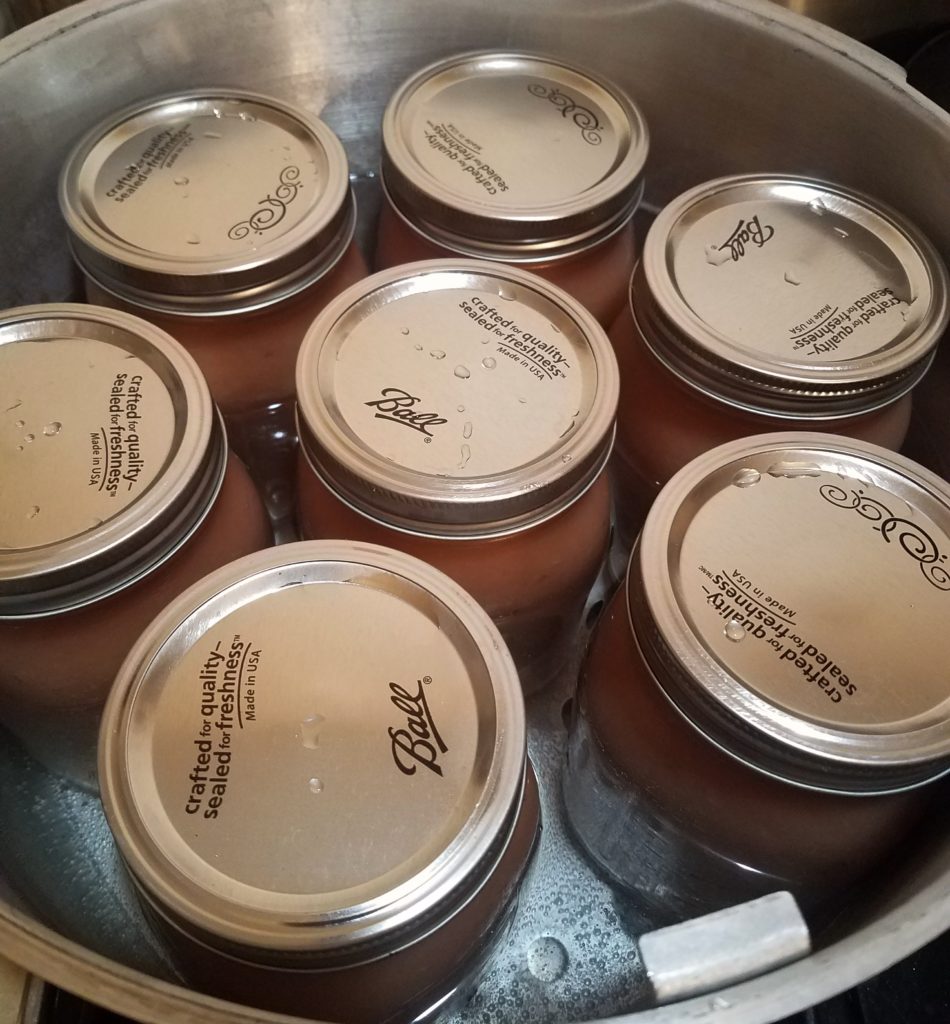
Place the jars in a boiling water canner or a pressure canner. Boil for 30 min, if you use a boiling water canner be sure to cover the jars with water. Or you can pressure can for 10 min. It is important that you start the time when the water is at a rolling boil or the pressure valve pops up on your canner not once you put the jars in.
When you take them out, place them on a towel to cool at room temperature, you should hear a popping sound as the lids seal and the little “button” pops in. Check the seal by ensuring that the lid center has popped down. If it hasn’t refridgerate at eat within a week.
Just like that, you have amazing homemade applesauce that you can store for 12 to 18 months.
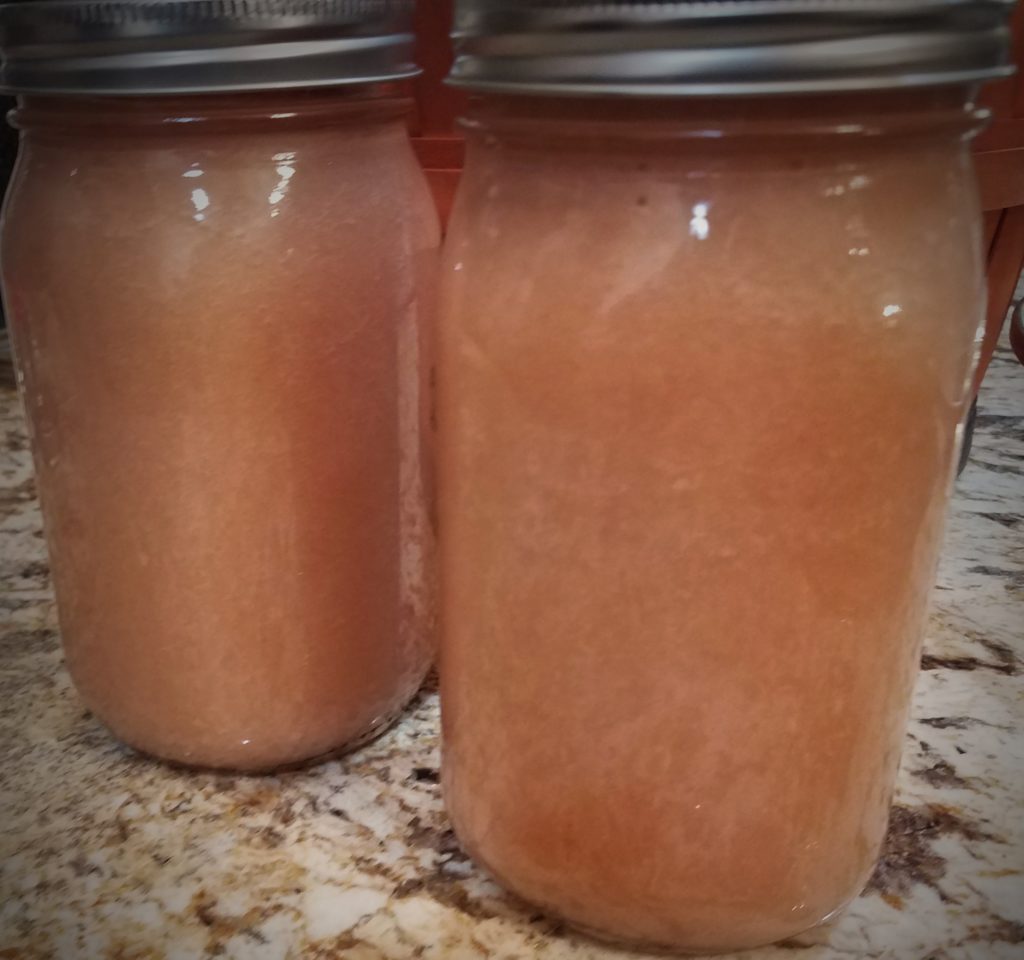





October 20, 2018 at 11:38 pm
I agree with your points, great post.
October 22, 2018 at 10:16 pm
Thanks sooooo much, I love to get comments back from people.
November 4, 2018 at 1:44 am
I come from a family of New York State apple farmers, so I like tothink there s applesauce in my blood. Gunnison Lakeshore Orchards, thefamily farm where my dad was raised in the 19 and , was at thattime mostly a McIntosh operation. Macs make a great eating apple but aren t great for cooking. Still, no one complained about the applesauce my grandmother churned out in almost constant supply throughout her entire adult life. I like to think that any Gunnison worth her name can tell homemade applesauce from a store-bought imitator blindfolded, but what would my less apple-indoctrinated testers have to say on the subject? Let the games begin.